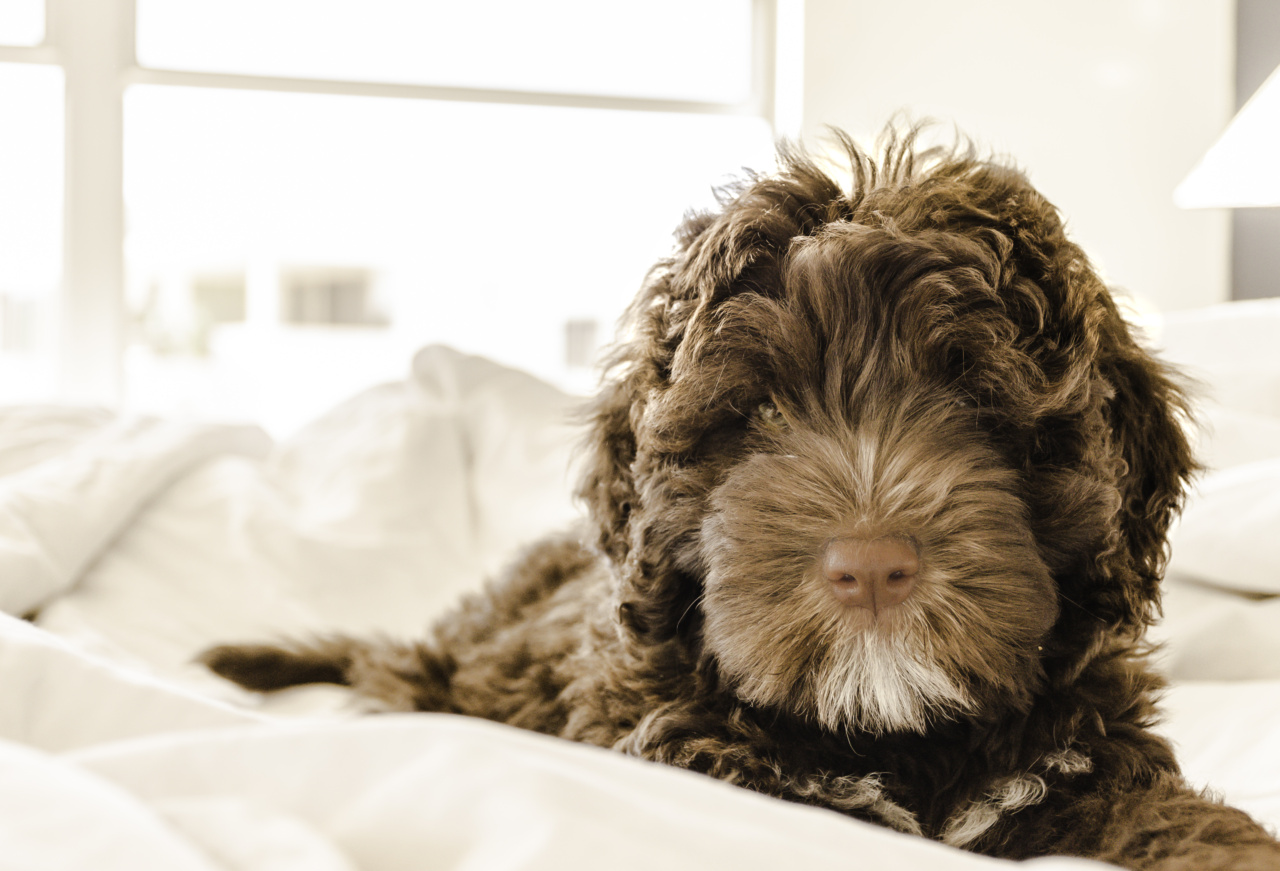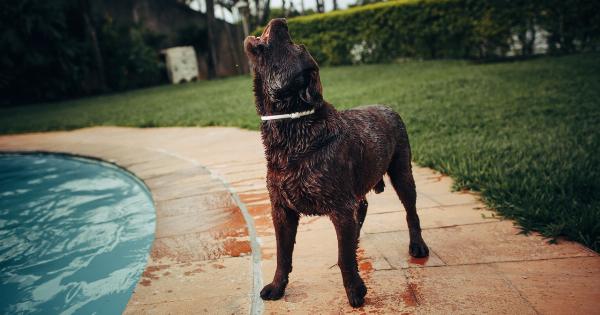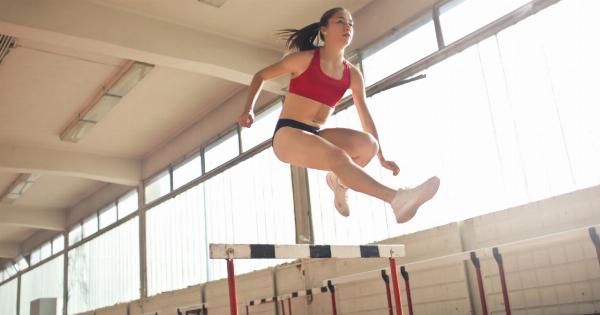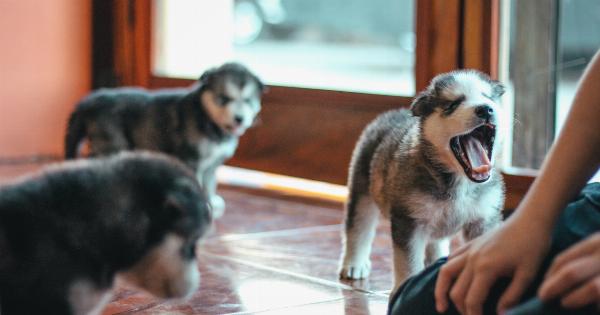If you’re a proud puppy parent, you must have experienced the joy and challenges that come with welcoming a new furry friend into your home.
One of the common challenges that puppy owners face is the frustrating issue of a puppy wetting his bedding. It can be both concerning and inconvenient. Rest assured, you’re not alone in dealing with this problem. In this article, we will explore the reasons behind this behavior and provide tips to help you address and resolve this issue effectively.
Understanding the Possible Causes
Before diving into solutions, it’s important to understand the potential reasons behind your puppy wetting his bedding. Identifying the root cause will assist in devising the most suitable approach to tackle this problem.
Some possible causes include:.
Inadequate House Training
Your puppy may not have been sufficiently trained to control his bladder or understand the appropriate places to relieve himself. This lack of house training can lead to accidents, including wetting his bedding.
Overexcitement or Anxiety
Puppies are naturally energetic and can get easily overwhelmed or anxious. In situations where they are experiencing high levels of excitement or anxiety, accidents can occur. This may result in your puppy wetting his bedding.
Identifying triggers for these emotional states can help prevent accidents in the future.
Urinary Tract Infections
In some cases, underlying health issues may be the cause of your puppy’s bedwetting. Urinary tract infections can lead to an increased need to urinate, resulting in accidents.
If you suspect a urinary tract infection, it’s essential to consult your veterinarian for proper diagnosis and treatment.
Inappropriate Crate Use
If you’re utilizing crate training as part of your puppy’s routine, it’s crucial to ensure that the crate is appropriately sized and comfortable.
If the crate is too big, your puppy may use a corner to relieve himself and keep the rest of his bedding clean. Providing a crate that is only large enough for your puppy to stand, turn around, and lie down comfortably can discourage bedwetting.
Establishing a Proper Routine
To address and resolve this issue, establishing a consistent routine is key. By implementing the following strategies, you can help your puppy understand where and when it is appropriate to relieve himself:.
1. Frequent Bathroom Breaks
Take your puppy outside for bathroom breaks frequently, especially after eating, drinking, playing, or waking up from a nap. This will help to prevent accidents while allowing your puppy to associate going outside with relieving himself.
2. Reward-Based Training
Praise and reward your puppy when he relieves himself in the appropriate area. Positive reinforcement plays a significant role in reinforcing good behavior.
Use treats, verbal praise, and petting to communicate your approval and encourage your puppy to continue this behavior.
3. Consistent Feeding Schedule
Establish a consistent feeding schedule for your puppy. Regular meal times will create predictable bathroom routines. Avoid leaving food out all day as it can make it harder to predict when your puppy needs to go outside.
4. Supervision and Confinement
The key to preventing accidents is closely supervising your puppy and limiting access to areas where accidents are likely to happen. Use baby gates or keep your puppy in a designated area within your line of sight.
This will help you identify signs that your puppy needs to eliminate and promptly redirect him to the appropriate spot.
5. Correcting Accidents
If you catch your puppy in the act of wetting his bedding or elsewhere in the house, interrupt him with a loud noise or clap to startle him. Then, immediately take him outside to the designated area.
Avoid punishing your puppy as it can create fear and hinder the training process. Focus on redirecting his behavior and rewarding him for doing the right thing.
6. Regular Vet Check-ups
If you’ve tried several housebreaking techniques and your puppy continues to wet his bedding, it’s advisable to consult your veterinarian. Underlying health issues, such as urinary tract infections, may require medical intervention.
Your vet will be able to provide an accurate diagnosis and recommend appropriate treatment if necessary.
Avoiding Common Mistakes
While addressing the issue of a puppy wetting his bedding, it’s important to avoid common mistakes that can hinder progress:.
1. Punishing Your Puppy
Punishing your puppy for accidents can have negative consequences. It may cause fear or anxiety, making your pup more prone to having accidents. Focus on positive reinforcement and redirecting your puppy’s behavior to achieve better results.
2. Inconsistency
Consistency is key when it comes to house training your puppy. Don’t make exceptions or skip training sessions. Ensure that everyone in your household follows the same routine and guidelines to avoid confusing your puppy.
3. Neglecting Health Concerns
If your puppy’s bedwetting persists despite consistent training efforts, it’s crucial to rule out any underlying health issues. Ignoring potential health concerns may prolong the problem and prevent effective resolution.
Always consult your veterinarian if you suspect a health issue.
Conclusion
Dealing with a puppy wetting his bedding can be a frustrating experience, but with patience, consistency, and proper training techniques, you can help your furry friend overcome this issue.
Remember that accidents are a normal part of the housebreaking process, and with time and effort, your puppy will learn where and when to relieve himself. By understanding the causes and implementing a structured routine, you’ll be on your way to having a dry, comfortable, and happy puppy.


























